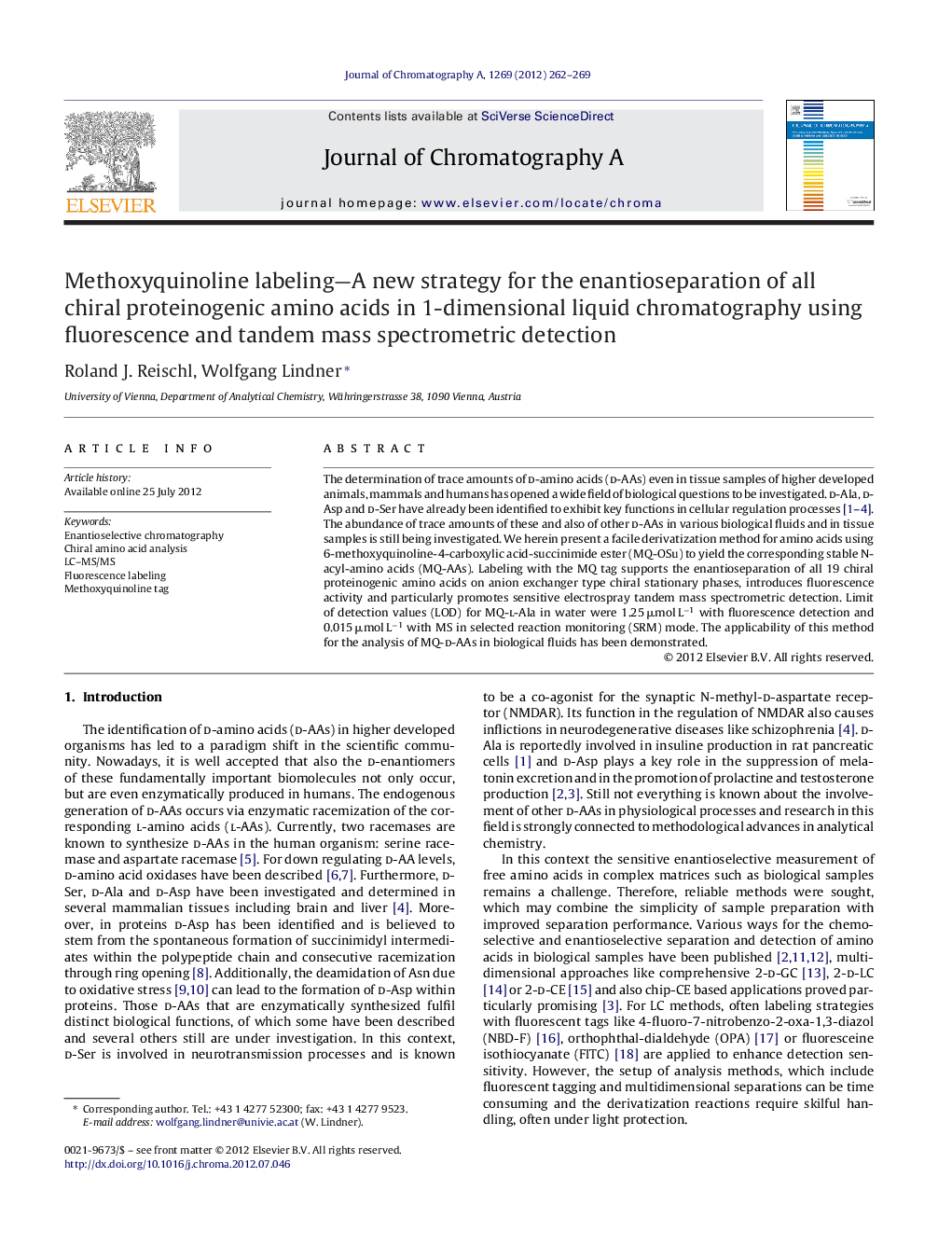| Article ID | Journal | Published Year | Pages | File Type |
|---|---|---|---|---|
| 1201784 | Journal of Chromatography A | 2012 | 8 Pages |
The determination of trace amounts of d-amino acids (d-AAs) even in tissue samples of higher developed animals, mammals and humans has opened a wide field of biological questions to be investigated. d-Ala, d-Asp and d-Ser have already been identified to exhibit key functions in cellular regulation processes [1], [2], [3] and [4]. The abundance of trace amounts of these and also of other d-AAs in various biological fluids and in tissue samples is still being investigated. We herein present a facile derivatization method for amino acids using 6-methoxyquinoline-4-carboxylic acid-succinimide ester (MQ-OSu) to yield the corresponding stable N-acyl-amino acids (MQ-AAs). Labeling with the MQ tag supports the enantioseparation of all 19 chiral proteinogenic amino acids on anion exchanger type chiral stationary phases, introduces fluorescence activity and particularly promotes sensitive electrospray tandem mass spectrometric detection. Limit of detection values (LOD) for MQ-l-Ala in water were 1.25 μmol L−1 with fluorescence detection and 0.015 μmol L−1 with MS in selected reaction monitoring (SRM) mode. The applicability of this method for the analysis of MQ-d-AAs in biological fluids has been demonstrated.
► All 19 chiral proteinogenic amino acids were separated in one chromatographic run. ► Amino acids were tagged with 6-methoxyquinoline to yield N-acyl derivatives. ► Derivatization enabled chromatographic chemoselectivity and enantioselectivity. ► The label is highly fluorescent and enhances MS detection sensitivity. ► LC selectivity, FLD sensitivity and MS-specificity were applied complementary.
